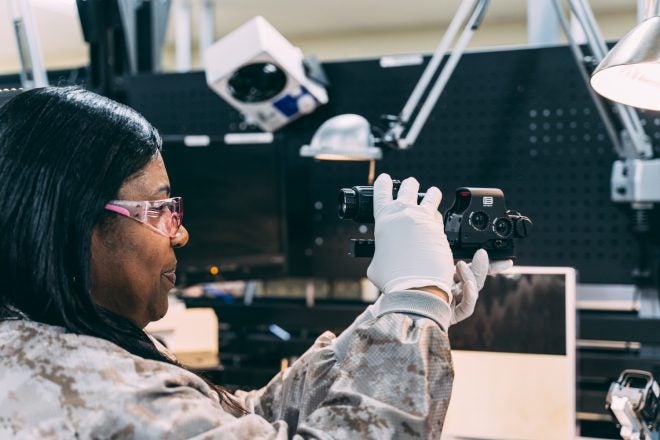Last week I posted part one of EOTech’s factory tour. In part two we will take a look behind the curtain at how EOTech’s Holographic Weapon Sights (HWS) are manufactured. After the factory tour we were taken out to a local range to test some of their products.
EOTech Factory – Make All The Things
At the Ann Arbor, MI facility they assemble all the HWS and their G33 magnifiers. They even make some smaller parts for L3 like the small lens covers for PEQ15 weapon laser.
First, let’s address the Thermal Drift issue. According to Marketing Manager Ann Hanson, only 30% of consumers were aware of the problem. EOTech went direct to Law Enforcement and disclosed the issue. Some left EOTech while some departments stayed with them. Eventually some departments that left came back to use the HWS.
But what did they do to correct this problem? First of all, you should understand that all optics have some form of thermal drift – It is simple physics. While the components and materials have not changed, EOTech heavily upgraded their quality control and testing lab. They hired an expert who came from the Automotive Industry whose experience comes from performing quality control for automotive manufacturers. Today, Umesh is now Eotech’s Director of Operations. He doubled the size of their testing lab and focuses on statistical process control where their motto is 100% quality while 100% on time.
Samples from each batch of HWS models are pulled and tested in this lab. Unfortunately we do not have any photos of the test lab but I can describe what I saw. They have several chambers that test for pressure and several refrigerator sized cabinets that test for thermal drift and thermal shock. One large testing cabinet has a camera attached to the side and checks for POA shift. There is an acceptable range for the reticle to shift but if the sample exceeds this range it fails. If that happens they stop the production line and pull the entire batch. Every unit is then tested. Every stage of assembly is signed off by the employee working on it. This way they know down to the day and time everything happened. This is part of their ISO9001:2000 certification.
The housing of the HWS is polymer and those are made off-site. The critical aspect of assembling the HWS is installing the components precisely. If the optics are not installed properly, like the holographic grating, folding mirror, collimating reflector or the reticle image you can have parallax issues and the adjustment could be off. For example, HWS have 40 MOA adjustment in any given direction. If something is not installed properly, you could have a 60/20 MOA split between adjustments as opposed to an even 40/40 split.
As I mentioned in Part 1 of the EOTech factory tour, the reticle image hologram is the piece of glass that holds the reticle. It is laser etched using a mask. The dot in the reticle is a mere 10 microns wide. This results in a 1 MOA dot.
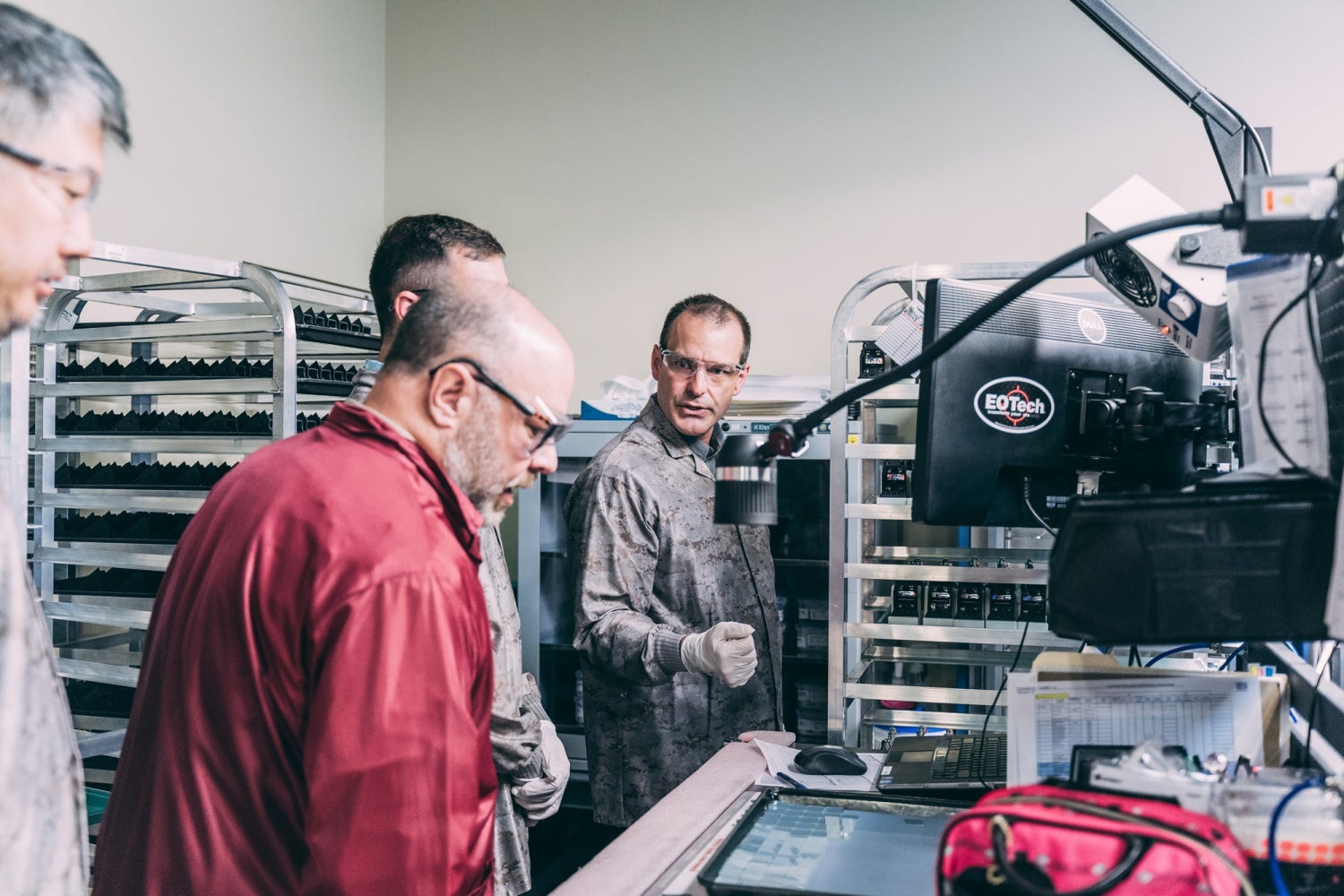
This is the laser that etches the reticle into the piece of glass.

These pieces of glass have been etched but you can only see the reticle when a laser hits it.
The room where they install the optics and make the reticle image hologram is temperature and humidity controlled. They have sensors and a hard threshold at 40% humidity. If humidity reaches 40% the line stops until they can bring the humidity back down below 40%. EOTech has plans to move glass and mirror assembly further inside the building. The room they are in now is smaller than the new location. I thought humidty would be easier to control in a smaller room and normally it is, however the current room uses an exterior wall which makes humidity more difficult to control.
All employees and us on tour, must wear these smocks. This controls static electricity but plugging into grounding contacts in each station but it also helps reduce foreign materials like lint from fouling assembly. They go through a lot of latex gloves since every employee must wear them when they are inside the delineated zones of assembly.

Below you can see final assembly. At the end of this line, you can see an employee sitting in front of a large white machine. This is a shock test. Every production built unit goes through 40 recoil hits.
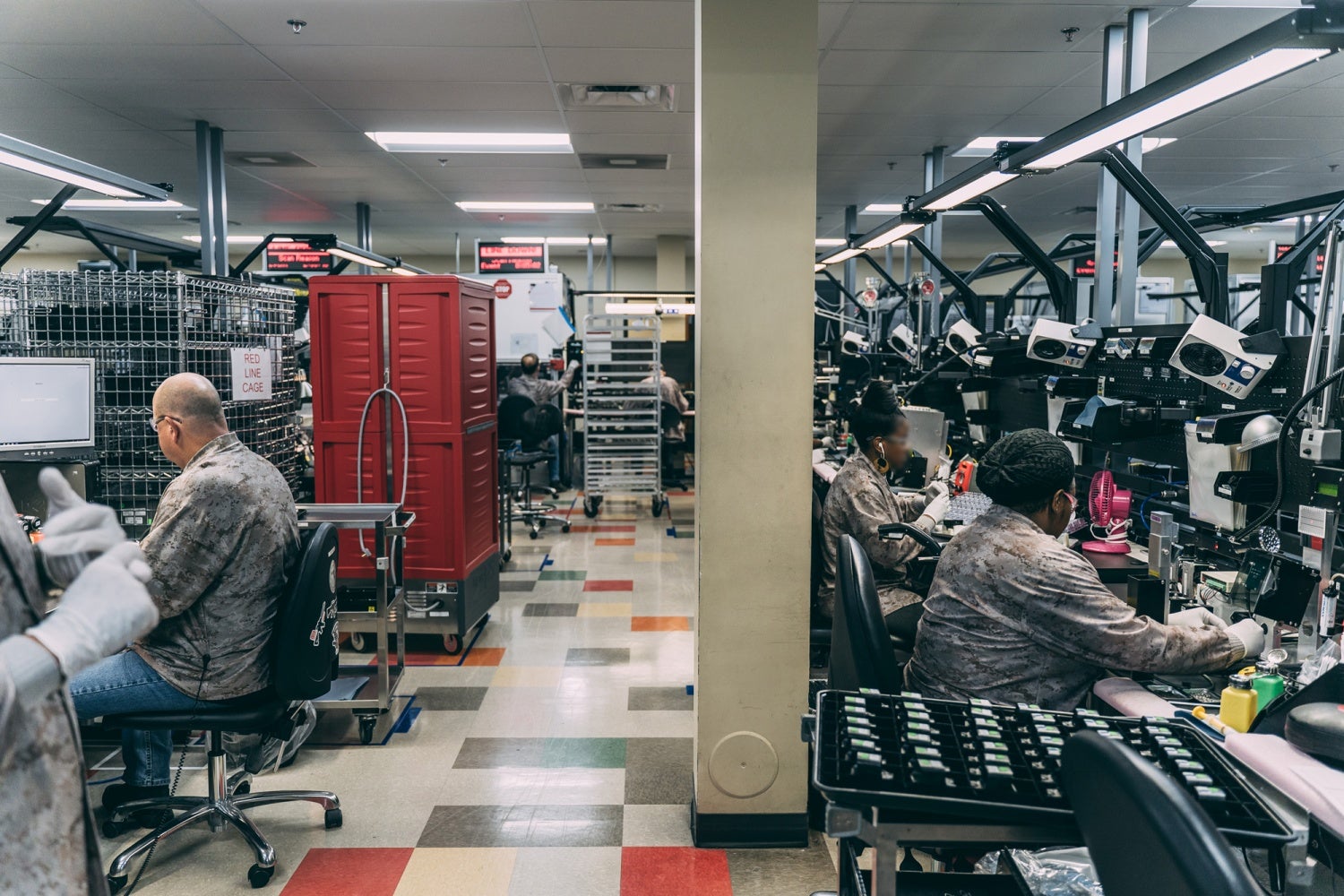
Below is a replica of what I saw. The anvil is a cylinder with four picatinny rails that allow the tester to mount four HWS at a time. The machine drops a large hammer that strikes the anvil. This simulates reward recoil. When the machine resets, there is a forward shock which simulates forward recoil like those seen on large bolt rifles such as the SCAR 17S.

My EXPS-3 mounted to my Battlemug to replicate the testing anvil at EOTech.
Their G33 Magnifiers are assembled here as well. On any given day EOTech makes around 500 HWS and 100 magnifiers.


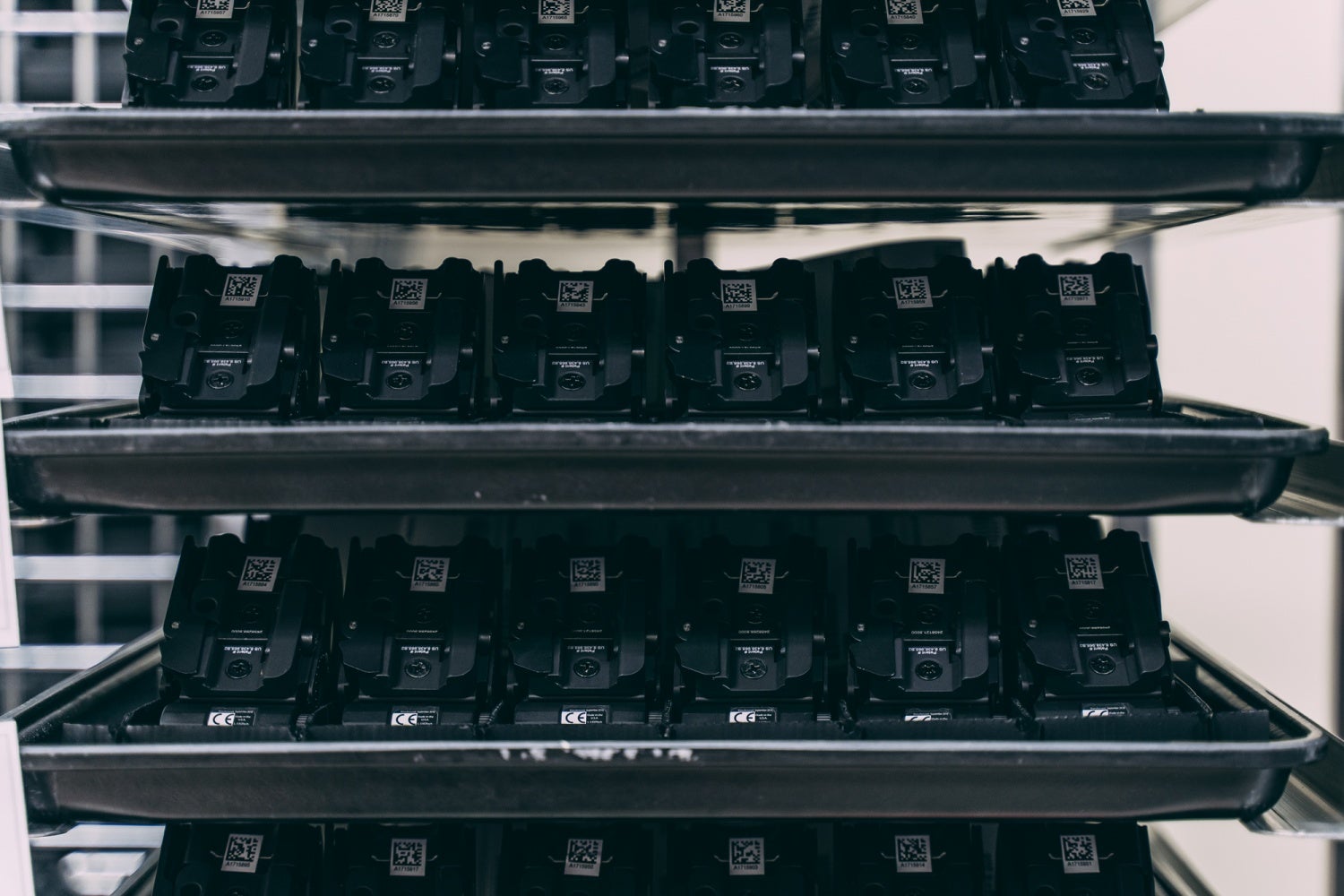
Military HWS vs Civilian HWS
One of the more surprising things we learned at the EOTech Factory Tour was that the HWS made for Department of Defense are no different than the ones made for the civilian market. While the DOD HWS are tested to higher and stricter standards set by the government; the materials, method of manufacturing and assembly is no different than their civilian line of HWS. There is a slight difference with the DoD sights in terms of quality control. As mentioned earlier civilian sights batch tested. Whereas every single DoD sight is individually tested before leaving the factory.
Another interesting point is how the DOD contract is set up. Once EOTech locks in the contract to make HWS for the government they are not allowed to stray from this in any way. The tests, materials, method of manufacturing cannot be altered without government approval.
Hitting The Range With EOTech

The guys at EOTech took us out to a local range to try out some of their weapon sights. I had never used a G33 magnifier with a HWS and now I see why so many people use this combination. The G33 compliments the HWS perfectly and makes the reticle appear sharper looking. It makes hitting further targets easier and faster. 
Here is the sight picture through one of their new Green HWS. 
Flip the G33 and the green reticle looks sharp and crisp. The dot in the center is 1 MOA making it precise for more accurate hits at further distances.

One of the guns available to shoot was a Q Honey Badger in .300blk. It had a .300blk HWS mounted on it.

On the top of the hood is a quick reference chart for shooting sub sonic and super sonic ammo.

EOTech also had their latest 5-25×50 super short scope. It was mounted onto a 6.5CM The Fix Rifle by Q.
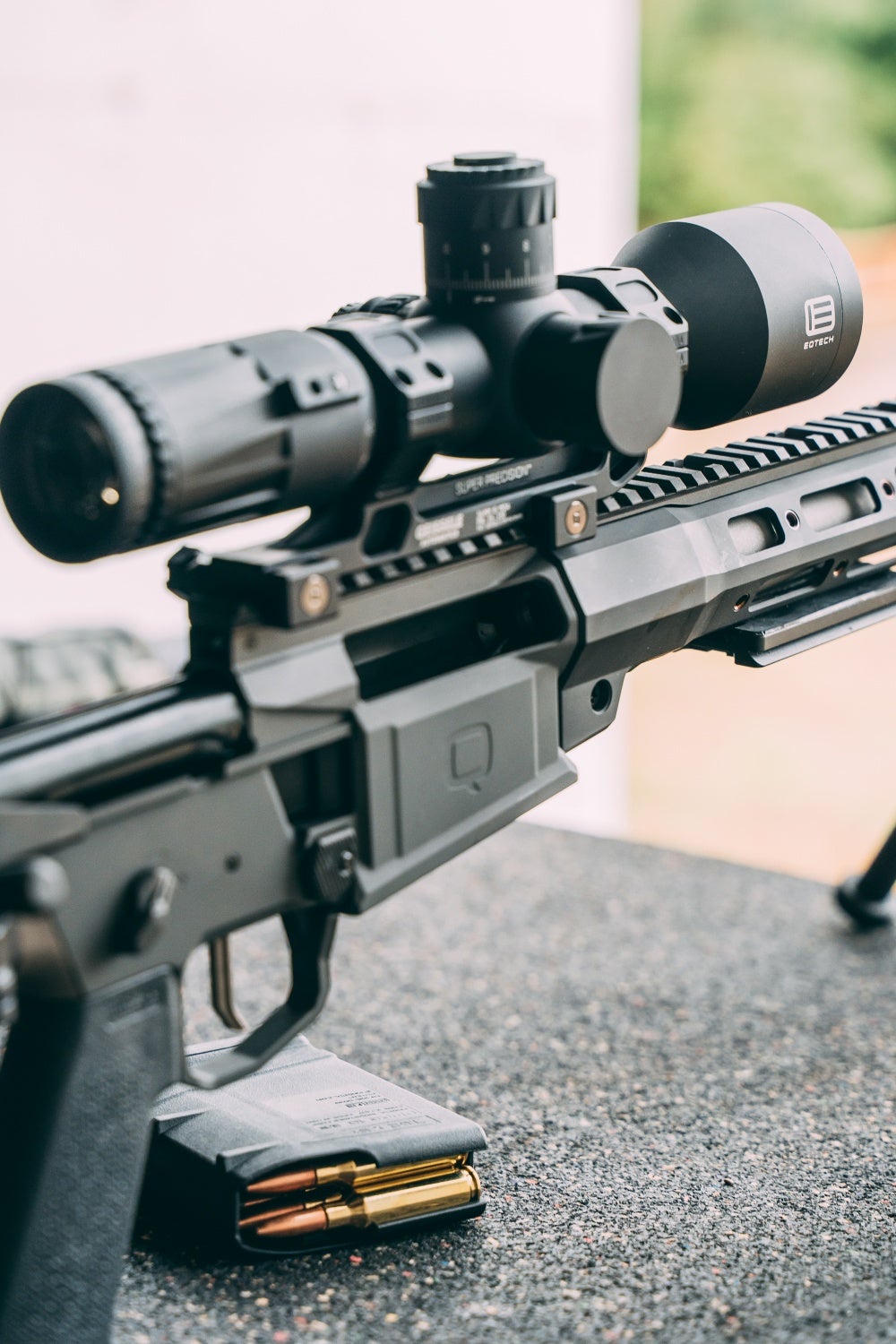
The short optic was designed to work with clip on devices and EOTech brought out the L3 Light Weight Thermal Sight (LWTS). You can see below how there is plenty of room for the clip on with the short scope.

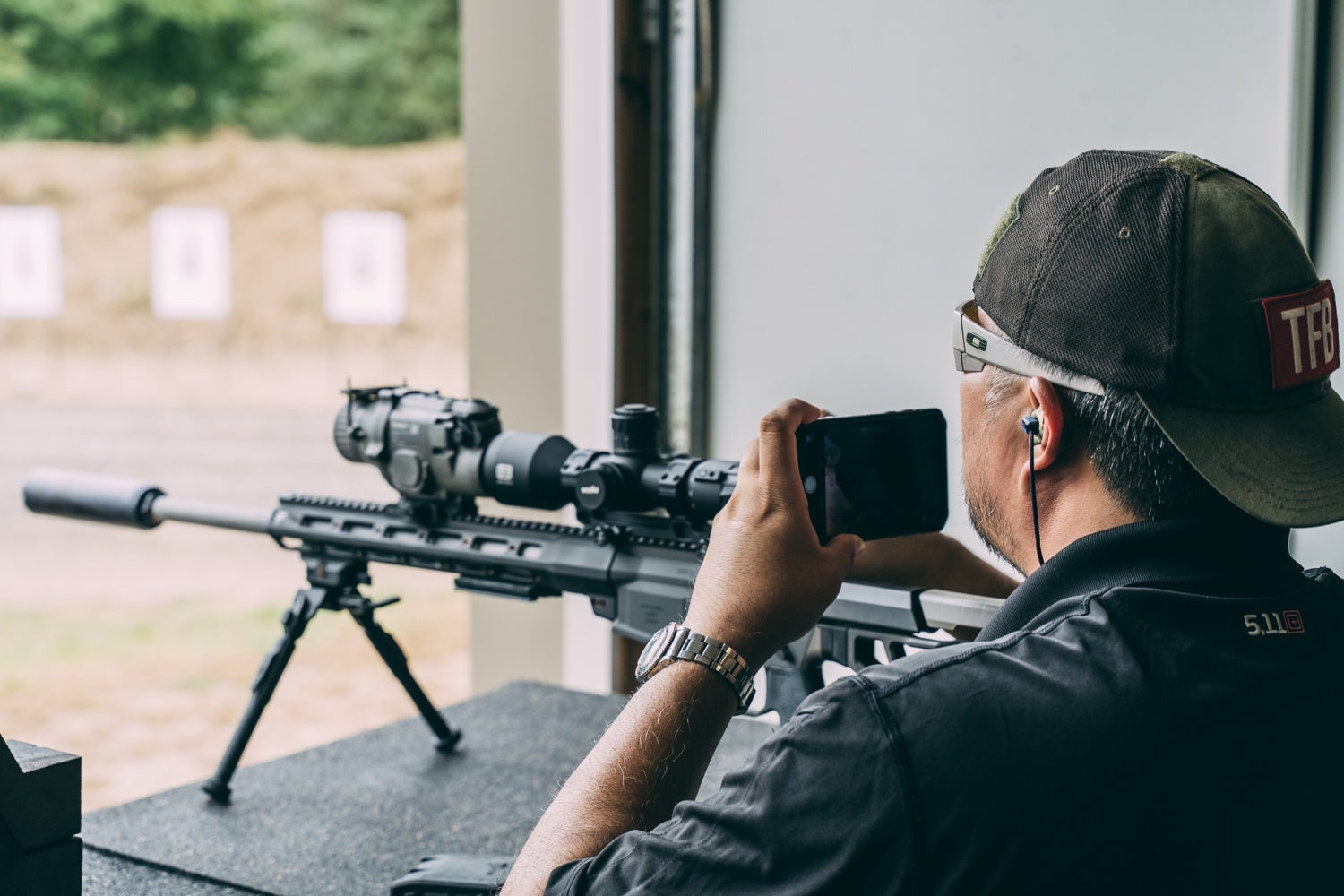
The LWTS is a pricey piece of equipment at $15,000 MSRP.


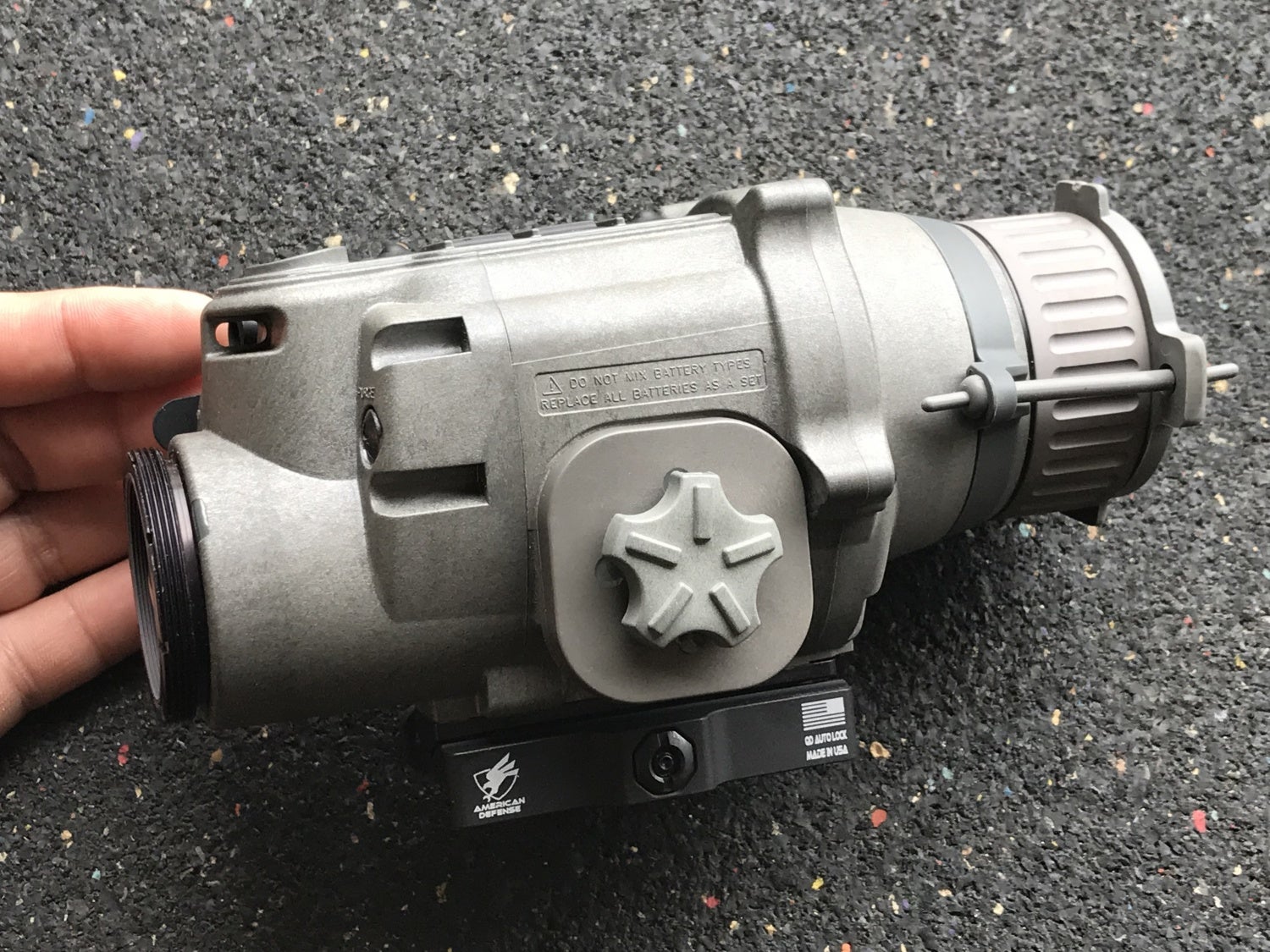

The EOTech photographer captured this photo of me taking a photo of the LWTS
I managed to take a photo of the LWTS image and it is very sharp looking compared to my FLIR T50 ACTS. Although my FLIR thermal weapon sight is a decade old.

While these clip on thermal sights can be used independently as a hand held thermal scope they are normally to be used with an optic. One aspect I never thought about was using a clip on thermal with a HWS and magnifier.


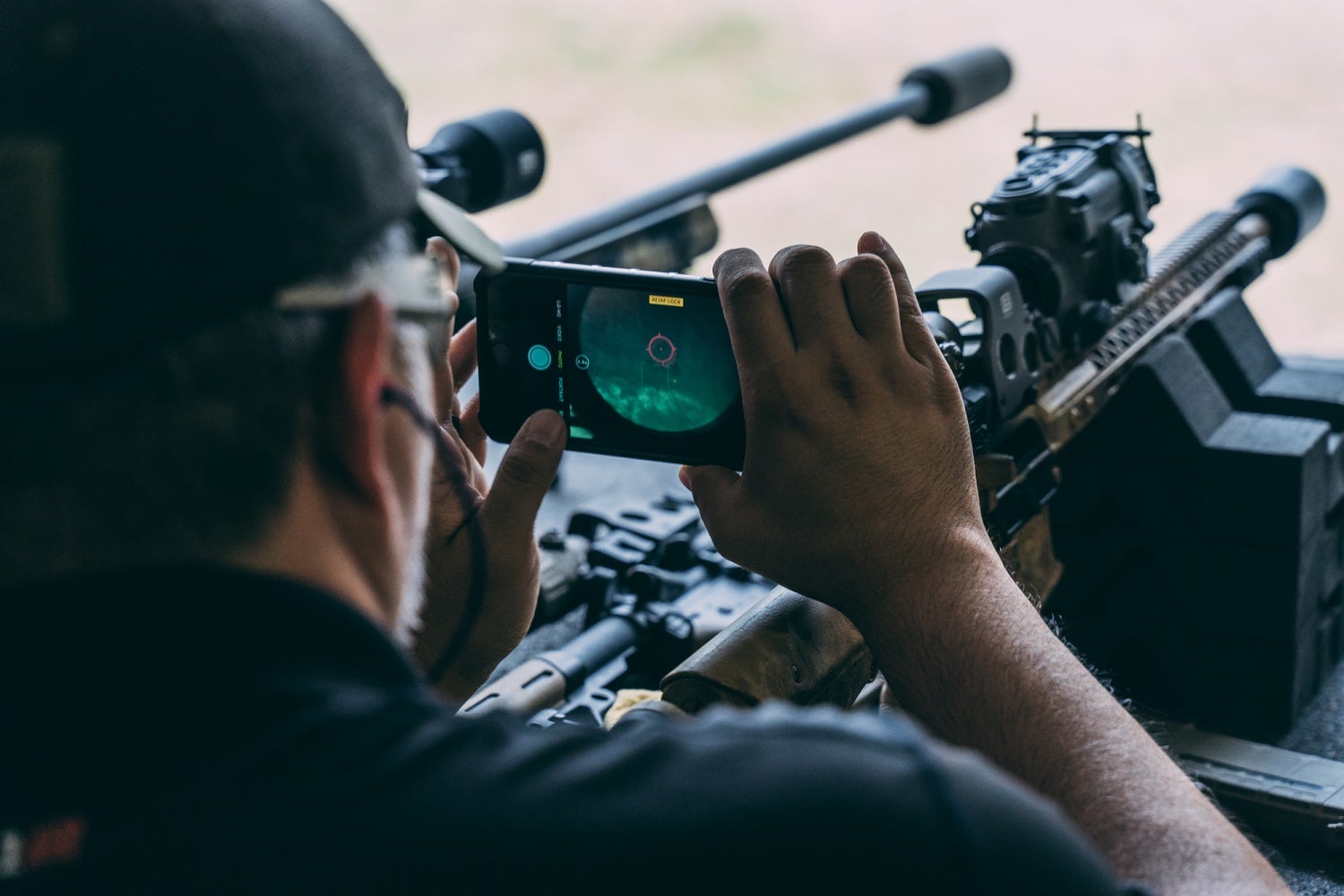
The only problem with this setup is that light will get in between the thermal and HWS and the glare may reduce your ability to see through the thermal sight. My FLIR T50 has a rubber shroud to block out light getting in between it and an ACOG. The PVS30 has a soda can like koozie to shroud the gap between it and a scope.
The EOTech factory tour was definitely eye opening. I learned a lot about how the HWS is much better than your run of the mill red dots. Finding out that the military made HWS are made the same way as the civilian HWS was truly interesting. I thought the military HWS would be made of better materials but that is not the case. I still have my 512 EOTech HWS and only used it as a dedicated optic for my KRISS Vector carbine. I got it back in 2010 and it is still working fine. Seeing how well a magnifier works with the HWS reticle is making me want to get a G33 for my EXPS-3. The factory tour is making consider many of EOTech’s products, especially that short 5-25×30 VUDU scope for use with a clip on night vision sight or thermal weapon sight.
 Your Privacy Choices
Your Privacy Choices
